Martin Edwards's Blog, page 132
December 31, 2017
2017 - People

In this last blog post of 2017, I'd like to thank everyone who reads this blog for stopping by during the year. And special thanks to those whose comments and emails have so often made my day. Over the past 48 hours, I've talked about publications and places that made this a great year for me, but it's right to end the year with reflections on the most important subject of all - people. I can only mention a handful of those who have played a welcome part in my year, but here are a few recollections before I wish you all the best for the next twelve months.
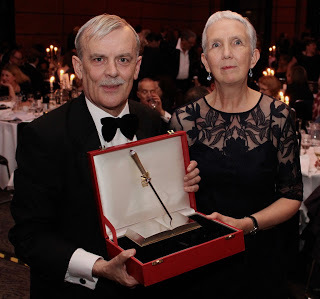
I had the pleasure of presenting a well-deserved Red Herring award to Barry Forshaw, a tireless champion of crime fiction and of the CWA. On the same evening, I also presented the CWA Diamond Dagger to Ann Cleeves: for both of us, it was a slightly surreal moment, given that we've been friends for so long, and many of those years weren't exactly crammed with glittering prizes. Great fun, though. On the subject of the CWA, I'd like to make special mention of my colleagues on the CWA Board, whose support makes a rather time-consuming role pleasurable to undertake. They are a great set of people. And the same is true of my colleagues in the Detection Club: special mention here for Simon Brett and Michael Jecks, whose help is invaluable. Nobody can lead anything effectively without backing from others, and I'm very lucky in this regard. The same goes for authors, their agents and publishers, of course, and my thanks go to James Wills for his work on my behalf, and the various lovely publishers I work with - special mention to Rob Davies and his colleagues at the British Library; it was great spending time with Rob in the UAE back in March.

Inevitably, there were sad moments when friends or acquaintances died. Among fellow crime writers, the death of Peter Walker was quite a blow. We met for the last time in Februrary, at the very same place we first met 30 years earlier, the Crown Hotel in Boroughbridge. Peter introduced me to CWA meetings and was a great guy, much missed. Marion Babson and Colin Dexter were also people I'd known a long time, though less well. I have fond memories of Colin ringing me up and offering to contribute a story to Mysterious Pleasures, and also of our last meeting, in Oxford, when he presented me with an inscribed copy of one of the scripts for Lewis. Sue Grafton, whose death has just been announced, is someone I met very briefly a couple of times. I have a vivid memory of sitting next to her at my first overseas Bouchercon, and comparing her colossal line of fans with books to be signed with mine, which was....short. Nothing like that sort of thing for reminding you of your place in the food chain! She was a charming woman and a good writer.
Finally, thanks again to all those who have made this year a really special one for me. Not least my long-suffering family, Helena, Jonathan, and Catherine. Here's hoping that 2018 will bring you what you wish for.
Published on December 31, 2017 05:02
December 30, 2017
2017 - Places
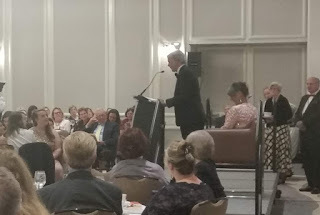

This year, I've travelled to some wonderful places both in the UK and much further afield. Often these trips have been for specific writing-related reasons, sometimes also as a pleasing form of research. It's hard, when one has been so lucky, to pick out particular favourites, but my visit to Washington DC for Malice Domestic was especially memorable, as I was honoured with the Poirot award. This was, quite simply, one of the best moments of my career as a writer, and it was a delight to share the occasion with some very good friends, including Joni Langevoort, John Pugmire, Josh Pachter, Frances Brody, and Ann Cleeves. Six months later, in London, I had the chance to recall that moment when presenting Ann with the CWA Diamond Dagger. Another highlight was being interviewed by Cathy Ace, with the Chair of the Malice Board, Verena, dressed as a maid and serving us tea!


A number of these locations have found their way into my fiction. Travel often gives me ideas for short stories. I vary my approach: sometimes I visit a place with a particular story concept in mind, but more often I like to get a sense of a destination before trying to figure out what sort of story would work if set there. As I mentioned yesterday, one story to have been published so far was "The Repentance Wood", set in Sharjah and Dubai, My eight days in the UAE for the Emirates Literature Festival were wonderful, and an evening boat trip in the company of Kathy Reichs, Lucy Hawking, and others was utterly memorable. I've also written a story called "Catch of the Day", which was commissioned by someone I met in Dubai, and which will be released by Audible, as part of an innovative new book, some time in 2018. I'll post more details when I have them.



I really enjoyed writing "Catch of the Day". It's set in Kauai, which I visited as part of a trip to Hawaii which included but certainly wasn't limited to Left Coast Crime. We travelled around the islands of Oahu, Maui, and Kauai in the company of Steve Steinbock and his wife Sue, who were perfect travel companions. And on the way back, a stop-off allowed a couple of days in San Francisco, which is now my favourite American city. It's a superb location for a mystery story as many others have proved, and I continue to turn over possible ideas for a plot which takes full advantage of the evocative setting.



Another short story I've written, though I've yet to send it anywhere, is set in northern Italy, in the atmospheric city of Bergamo. It's called "Temptation Street". We went to the Italian lakes in the company of Kate Ellis and her husband, two more splendid holiday companions. The idea for the story came to me during a walking tour of Bergamo. I was very taken with Lake Como, and the villages on its shores, as well as St Moritz, Lugano, and Stresa. On a separate trip, I visited Milan and Trieste, and much as I liked Milan, with its magnificent cathedral, and Roman remains, I was even more smitten by Trieste. I've worked out the idea for a short story that makes use of both Lugano and Trieste as locations, but as yet it remains obstinately incomplete, and also lacking a title. I hope to finish it at some point next year.
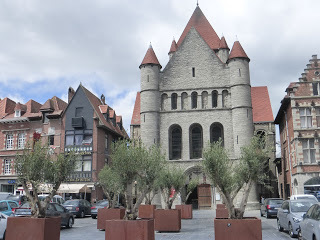
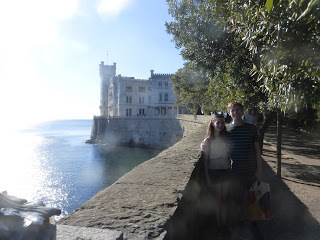
When I visited northern France and Belgium with my son, I thought I'd be able to find a suitable setting for another story, and this proved to be Tournai, rather than somewhere like Lille or Arras, though I did like both those places. However, the idea hasn't really gelled as yet, and when that happens, it's often better not to force things. Again, it may be that time and reflection will get the story idea to where it needs to be.



A striking feature of the year was the extent of interest in classic crime fiction, and I didn't expect to be talking about it at the University of Madrid, that's for sure. But an invitation duly came, and it gave me the chance to meet up with Golden Fan Jose Ignacio Escribano, who took me around his home city - another day to remember. Equally memorable was my trip to Toronto Bouchercon, where again I had the chance to talk about classic crime among other things, as well as visiting Niagara Falls in the company of Chrissie Poulson, Shawn Reilly Simmons, and other intrepid travellers who survived a bizarre coach trip..
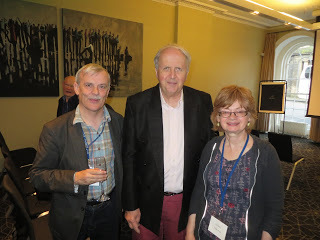
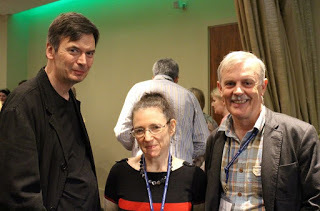
Of the British crime festivals, I enjoyed CrimeFest as usual, and had the added bonus of discovering that my story "Motives for Murder" was a contender for the CWA Short Story Dagger; it reached the shortlist of six. At the Harrogate festival, I moderated a panel including Denise Mina and Alafair Burke, while the CWA's annual conference offered many delights, including a chance to rub shoulders with Ian Rankin and Alexander McCall Smith. I was particularly happy with the success of Alibis in the Archives at Gladstone's Library, which sold out very quickly. Tickets for 2018's weekend will be going on sale soon, and I do hope to see some readers of this blog there. It should be another fun occasion. Among other talks, I travelled up to Grasmere to speak to a group of visiting Americans, including Charles and Caroline Todd, whose historical mysteries I strongly recommend. It's always good to get back to the Lakes, and that was a good trip which benefited from excellent weather. As I told the visitors, it isn't always so sunny in the Lakes...
.


Working with the British Library continued to keep me pleasurably occupied. The Story of Classic Crime in 100 Books sold in pleasing quantities at Bodies from the Library, and I also enjoyed conducting a "masterclass" week-end on Golden Age fiction at the Library last January. Again, this was a sell-out, and though it was quite tiring, I found it exhilarating too. The Library set up various talks and events for me at places ranging from Runcorn to York, Lancaster to Cambridge. As well as my work with the BL and with Gladstone's, I also took part in a number of library events, including a couple at the Lit and Phil in Newcastle. And one step I've taken as CWA Chair has been to appoint a Libraries' Champion, Ruth Dudley Edwards . It's part of our, and my, commitment to supporting public and independent libraries, which make such an invaluable contribution to our lives, and to the communities of which we form part. On that note, I mentioned earlier this year the campaign to save our local library in Lymm. And I'm very glad to report that the campaign has succeeded. The library will stay open, thank goodness.
.
Published on December 30, 2017 05:00
December 29, 2017
2017 - Publications
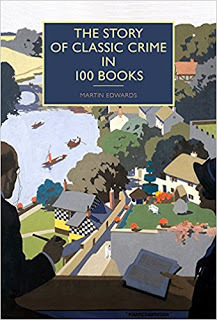
This has been an eventful year for me on many fronts, and I have an over-riding feeling of gratitude for twelve months of good health and good fortune. I became Chair of the CWA at the start of 2017, and it was always clear that this would take up much more time than does being President of the Detection Club, which is a much smaller and less complicated organisation. I'm the first person to have held both offices at the same time (which could suggest a certain naivete on my part) but despite the time pressures, fortunately I've managed, so far at least, to combine these roles with a reasonable amount of productivity as a writer.
The British Library's publication of The Story of Classic Crime in 100 Books in the summer was a highlight. I wanted this book not to seem like an anti-climax after the unexpected success of The Golden Age of Murder,which in some respect is a once in a lifetime kind of book, and which appeared in paperback in the UK this February. As things turned out, the reviews were great, and sales have been excellent (the two often do not go hand in hand, believe me). Less high profile, perhaps, but very rewarding, was the long-awaited publication of Taking Detective Stories Seriously, the collected reviews of Dorothy L. Sayers, to which I provided an intro and lengthy commentary. I'm so pleased that the Dorothy L. Sayers Society has made these wonderful reviews widely available - for the first time in more than 80 years.
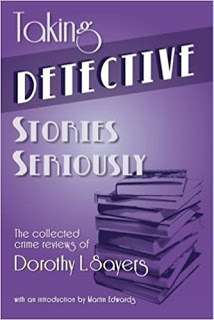
For the British Library, I've also compiled four anthologies of classic crime stories: Miraculous Mysteries, Continental Crimes, The Long Arm of the Law, and Foreign Bodies. I enjoyed putting these books together, and it's also been a pleasure to write a series of intros to new titles in the Crime Classics series, along with a special essay on Christmas crime fiction for the hardback edition of Anne Meredith's Portrait of a Murderer. I also wrote intros for books from other publishers, including an essay on locked rooms for the Folio Society's box set of three classic novels, Trent's Own Case in the Detective Story Club series, and Agents and Spies, published by Flame Tree. And last but certainly not least was an intro for Locked Room International's reprint of Death in the Dark by Stacey Bishop, an extraordinary book.
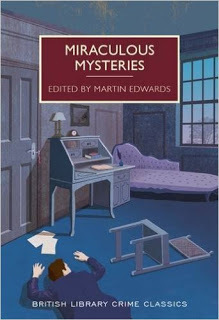
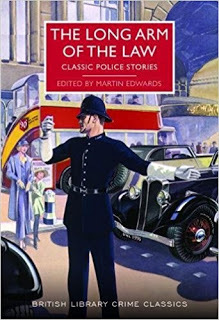

For good measure, I edited the CWA's latest anthology, Mystery Tour, to which I contributed a story, "The Repentance Wood" inspired by a trip to Dubai and Sharjah in March. And in case you're wondering what inspired that particular idea, here's the original Repentance Wood itself...
 I published a number of other short stories during the course of the year, including "The Corpse Candle" in Mystery Most Historical and "Bad Friday" in Busted!, an anthology of law enforcement stories. "Bad Friday" had its origins in a train trip from Euston which I and other passengers spent listening reluctantly to the rather offensive rantings of someone on her mobile phone. It wasn't an enjoyable experience, but for a writer, nothing is wasted! And "Farewell Cruise" recently appeared in Ellery Queen's Mystery Magazine - a story inspired, you guessed it, by trips on cruise ships...
I published a number of other short stories during the course of the year, including "The Corpse Candle" in Mystery Most Historical and "Bad Friday" in Busted!, an anthology of law enforcement stories. "Bad Friday" had its origins in a train trip from Euston which I and other passengers spent listening reluctantly to the rather offensive rantings of someone on her mobile phone. It wasn't an enjoyable experience, but for a writer, nothing is wasted! And "Farewell Cruise" recently appeared in Ellery Queen's Mystery Magazine - a story inspired, you guessed it, by trips on cruise ships...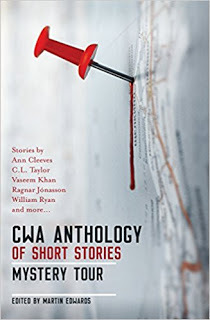
Published on December 29, 2017 08:03
Forgotten Book - Murder on the Second Floor
Murder on the Second Floor is a book with an interesting history, as well as a very interesting author. It began life as a stage play, produced in London in 1929, written, directed by and starring the charismatic and talented Frank Vosper. When Broadway beckoned, a youthful Laurence Olivier took over in the central role of Hugh Bromilow. While travelling by sea to the US to play opposite him, as Sylvia Armitage, Phyllis Konstam met the tennis player Bunny Austin, whom she later married. Although now herself largely forgotten, she also appeared in four films directed by Hitchcock.
The play was subsequently filmed, in 1932, and the movie was re-made in 1941 under the title Shadows on the Stairs. Vosper turned the story into a novel, as well, so he got very good value out of his idea. Unfortunately, he died in 1937, in the mysterious circumstances which are discussed in some detail in The Golden Age of Murder. There is a good account of the play, and a summary of Vosper's career, in Amnon Kabatchnik's monumental Blood on the Stage.
But is it any good? The New York critics were not impressed by the Olivier version, and the play closed after a short run. For a while, reading the novelisation, I was unimpressed myself. But gradually I began to warm to the story, which really is as much a satire as a crime story. By the time I reached the end, I could see why Murder on the Second Floor did so well in different formats.
The story is set in Bloomsbury, aka Gloomsbury. The Armitages have a couple of mysterious boarders (or "lets") as well as the young author, Hugh. Hugh and young Sylvia fall for each other, but Sylvia isn't impressed with Hugh's writing - and this disapproval is a catalyst for the events that follow. It was, and remains, decent light entertainment. Incidentally, one tiny point: the intro to the novel version that I possess, published the year after Vosper died after falling (somehow) from a liner, manages to get the name of the ship wrong. I believe it was the SS Paris, not the SS Normandie.
The play was subsequently filmed, in 1932, and the movie was re-made in 1941 under the title Shadows on the Stairs. Vosper turned the story into a novel, as well, so he got very good value out of his idea. Unfortunately, he died in 1937, in the mysterious circumstances which are discussed in some detail in The Golden Age of Murder. There is a good account of the play, and a summary of Vosper's career, in Amnon Kabatchnik's monumental Blood on the Stage.
But is it any good? The New York critics were not impressed by the Olivier version, and the play closed after a short run. For a while, reading the novelisation, I was unimpressed myself. But gradually I began to warm to the story, which really is as much a satire as a crime story. By the time I reached the end, I could see why Murder on the Second Floor did so well in different formats.
The story is set in Bloomsbury, aka Gloomsbury. The Armitages have a couple of mysterious boarders (or "lets") as well as the young author, Hugh. Hugh and young Sylvia fall for each other, but Sylvia isn't impressed with Hugh's writing - and this disapproval is a catalyst for the events that follow. It was, and remains, decent light entertainment. Incidentally, one tiny point: the intro to the novel version that I possess, published the year after Vosper died after falling (somehow) from a liner, manages to get the name of the ship wrong. I believe it was the SS Paris, not the SS Normandie.
Published on December 29, 2017 02:11
December 27, 2017
Jigsaw - 1962 film review
Jigsaw is a first rate British black and white crime film, which I caught up with on Talking Pictures recently. An unusual and intriguing feature of the film is that it's set in Brighton, but based on an American source novel, Sleep Long, My Love (1959), written by Hillary Waugh, doyen of the police procedural. The name of Waugh's series detective, Fred Fellows, is given to his British incarnation - played by none other than Jack Warner. Yes, Dixon of Dock Green himself.
Val Guest wrote and directed the film, and my understanding is that, despite the change of location, he remained fairly faithful to the source material. Changing the country in which a novel is set is often questionable - I didn't really see any advantage in setting The Girl on the Train in the US, for instance. But although I haven't read the novel, I feel that Guest does Waugh proud.
The story begins with the murder of an attractive woman in a lonely house The killer is her lover, but we don't see him. The next development is a break-in at a local estate agency. The mysterious theft of a set of leases leads the police, eventually, to the house where they discover the woman's dismembered remains. The key questions concern her identity, and that of the murderer. But there are interesting and important subsidiary issues. Why did the killer break into the agency, thus in effect giving the game away? And what made him stop before completing the task of dismemberment? The answers prove crucial to the solution.
A splendid cast contribute to the entertainment. The avuncular Warner is abetted by Ronald Lewis, who plays his nephew, a promising young cop. John Le Mesurier, Ray Barrett, John Horsley, Reginald Marsh, Moira Redmond, Norman Chappell, and Robert Raglan are all involved - really, the cast is a roll call of well-known British actors of the 60s and 70s. I was especially interested to see John Barron (C.J. from The Fall and Rise of Reginald Perrin), in which Horsley also appeared as Doc Morrissey) playing an untypical part as a member of staff at the estate agency. The atmospheric photography of Brighton adds to the watching pleasure. Highly recommended.
Val Guest wrote and directed the film, and my understanding is that, despite the change of location, he remained fairly faithful to the source material. Changing the country in which a novel is set is often questionable - I didn't really see any advantage in setting The Girl on the Train in the US, for instance. But although I haven't read the novel, I feel that Guest does Waugh proud.
The story begins with the murder of an attractive woman in a lonely house The killer is her lover, but we don't see him. The next development is a break-in at a local estate agency. The mysterious theft of a set of leases leads the police, eventually, to the house where they discover the woman's dismembered remains. The key questions concern her identity, and that of the murderer. But there are interesting and important subsidiary issues. Why did the killer break into the agency, thus in effect giving the game away? And what made him stop before completing the task of dismemberment? The answers prove crucial to the solution.
A splendid cast contribute to the entertainment. The avuncular Warner is abetted by Ronald Lewis, who plays his nephew, a promising young cop. John Le Mesurier, Ray Barrett, John Horsley, Reginald Marsh, Moira Redmond, Norman Chappell, and Robert Raglan are all involved - really, the cast is a roll call of well-known British actors of the 60s and 70s. I was especially interested to see John Barron (C.J. from The Fall and Rise of Reginald Perrin), in which Horsley also appeared as Doc Morrissey) playing an untypical part as a member of staff at the estate agency. The atmospheric photography of Brighton adds to the watching pleasure. Highly recommended.
Published on December 27, 2017 02:00
December 24, 2017
Merry Christmas!

I'd like to wish all readers of this blog a lovely Christmas. I really do appreciate your support, and your comments and emails are full of interest. Since starting "Do You Write Under Your Own Name?" just over a decade ago, I've learned a lot; it's been a quite fascinating voyage of discovery. I shall
I'll reflect on 2017 as we approach New Year, but it's certainly been a great twelve months for me, and next year looks like being equally crammed with writing and events. I've been grateful for reaction to my books, both fact and fiction, and the other day I enjoyed this piece on Puzzle Doctor's highly readable blog.
The only downside of so much activity is that I've not had as much time as I expected to read contemporary books by my friends. I've got quite a sizeable pile of them looking at me reproachfully right now (books, that is, not friends). But I would like to give a quick mention to a few of the novels I'm looking forward to reading "when I get a chance".
They include, in no particular order, Frances Brody's Death in the Stars, David Stuart Davies' Blood Rites (published by an impressive independent, Urbane), Ann Cleeves' The Seagull, Kate Ellis' The Mermaids Scream, and Len Tyler's Herring in the Smoke. Plenty of good choices for last minute presents there! And how about giving yourself a present or two as well, while you're at it? Go on, you deserve it! .
Published on December 24, 2017 04:35
December 22, 2017
Forgotten Book - Mischief
One regrettable habit of mine is to get hold of a good book and then to fail to find time to read it, for ages and ages. Today's Forgotten Book is an extreme example. I obtained a copy of Charlotte Armstrong's novel of psychological suspense, Mischief, many years ago, but I only got round to reading it recently. My mistake. It's a very good book, and so short and snappy that lack of time really wasn't much of an excuse.
The book was first published in 1950, early in Armstrong's career. It was filmed two years later, as Don't Bother To Knock, with none other than Marilyn Monroe. As late as 1991, it was adapted for a TV movie called The Sitter, though I haven't seen either screen version of the story. Several of Armstrong's books were filmed over the years, notably by Claude Chabrol, and it's not hard to see why. She's a vivid, atmospheric writer, and adept at creating a sense of menace and suspense. Her portrayal of female characters is also particularly compelling.
The set-up is straightforward. Peter and Ruth Jones come to New York City because Peter has to deliver a speech at a banquet. They have a nine year old daughter, Bunny, and they are let down at a late stage by their baby sitter. Help is at hand. The elevator man has a niece, Nell, who will sit with Bunny. But the elevator man, likeable as he is, is naive. Nell really isn't the sort of young woman to whom you'd want to entrust your child.
Trust is a theme of this book, and all the action takes place during the course of a single evening. The principal setting is the hotel where the Joneses are staying, and this adds to the rather claustrophobic mood of the book. The Joneses feel twinges of unease when they are introduced to Nell, but overcome them. We can tell that Bad Things are likely to happen when Nell is around. And the suspense is built expertly. I was impressed, and not only would I like to read more Armstrong, I'd also be interested in seeing some of the films based on her books.
The book was first published in 1950, early in Armstrong's career. It was filmed two years later, as Don't Bother To Knock, with none other than Marilyn Monroe. As late as 1991, it was adapted for a TV movie called The Sitter, though I haven't seen either screen version of the story. Several of Armstrong's books were filmed over the years, notably by Claude Chabrol, and it's not hard to see why. She's a vivid, atmospheric writer, and adept at creating a sense of menace and suspense. Her portrayal of female characters is also particularly compelling.
The set-up is straightforward. Peter and Ruth Jones come to New York City because Peter has to deliver a speech at a banquet. They have a nine year old daughter, Bunny, and they are let down at a late stage by their baby sitter. Help is at hand. The elevator man has a niece, Nell, who will sit with Bunny. But the elevator man, likeable as he is, is naive. Nell really isn't the sort of young woman to whom you'd want to entrust your child.
Trust is a theme of this book, and all the action takes place during the course of a single evening. The principal setting is the hotel where the Joneses are staying, and this adds to the rather claustrophobic mood of the book. The Joneses feel twinges of unease when they are introduced to Nell, but overcome them. We can tell that Bad Things are likely to happen when Nell is around. And the suspense is built expertly. I was impressed, and not only would I like to read more Armstrong, I'd also be interested in seeing some of the films based on her books.
Published on December 22, 2017 02:51
December 20, 2017
The Nightmare Man - DVD review
A murder mystery on a remote and scenic Scottish island. A determined cop with a likeable sidekick, trying to figure out what is happening. Got to be Shetland, right? Well, no. Long before Jimmy Perez, there was The Nightmare Man, a BBC TV four-part serial which aired in 1981, enjoyed considerable success - and yet has never been shown again, for reasons unclear. I didn't have a TV at the time, but I'd heard about the show, and now I've watched the DVD version, and read the remarkably detailed booklet which accompanies it. And I'm glad I did.
The Nightmare Man was based on a novel by a dentist called David Wiltshire. He thought about calling his book The Nightmare Man, but opted - unwisely, I think - for Child of Vodyanoi. The book first appeared in 1978 and made little impression; if you could find a nice copy in a dust jacket today, I'm sure it would cost you a pretty penny - there aren't any for sale on the internet as I write. Wiltshire has continued to write, his most recent novel appearing as recently as 2013, but this is the story he's best known for.
And with good reason. The BBC did him proud, even though I agree with his view that the setting of the final encounter might have been better if they'd kept to his original concept. In a touch I find pleasing, Wiltshire made his protagonist a dentist, and this idea was retained by Robert Holmes in the screenplay, although the character's name was changed. He's played by James Warwick, best known as Tommy Beresford in Partners in Crime. His girlfriend is played by the young Celia Imrie, whose quality as an actor is certainly evident here, especially in the first of the four episodes.
Something strange is happening on the foggy island of Inverdee. A woman is found horribly murdered, and soon there is another victim, a male birdwatcher. There are a few brief, enigmatic moments of action seen from the killer's perspective - almost through a red mist. A mysterious colonel turns up on the island, a sheep is butchered, and it's soon apparent that this is no ordinary murder case. Really, this is a story that straddles genres, but I found it entertaining. The cops are well played by Maurice Roeves and James Cosmo' the latter turned up recently as a hard man in Shetland. It's a small world...
The Nightmare Man was based on a novel by a dentist called David Wiltshire. He thought about calling his book The Nightmare Man, but opted - unwisely, I think - for Child of Vodyanoi. The book first appeared in 1978 and made little impression; if you could find a nice copy in a dust jacket today, I'm sure it would cost you a pretty penny - there aren't any for sale on the internet as I write. Wiltshire has continued to write, his most recent novel appearing as recently as 2013, but this is the story he's best known for.
And with good reason. The BBC did him proud, even though I agree with his view that the setting of the final encounter might have been better if they'd kept to his original concept. In a touch I find pleasing, Wiltshire made his protagonist a dentist, and this idea was retained by Robert Holmes in the screenplay, although the character's name was changed. He's played by James Warwick, best known as Tommy Beresford in Partners in Crime. His girlfriend is played by the young Celia Imrie, whose quality as an actor is certainly evident here, especially in the first of the four episodes.
Something strange is happening on the foggy island of Inverdee. A woman is found horribly murdered, and soon there is another victim, a male birdwatcher. There are a few brief, enigmatic moments of action seen from the killer's perspective - almost through a red mist. A mysterious colonel turns up on the island, a sheep is butchered, and it's soon apparent that this is no ordinary murder case. Really, this is a story that straddles genres, but I found it entertaining. The cops are well played by Maurice Roeves and James Cosmo' the latter turned up recently as a hard man in Shetland. It's a small world...
Published on December 20, 2017 00:56
December 17, 2017
Crooked House - Channel 5 TV review

I'm not quite sure what to make of Crooked House, Channel 5's brand new version of Agatha Christie's 1949 stand-alone novel, the credits of which rolled a few minutes ago. But then, my feelings about the book, which I read as a teenager, are also equivocal. I'll always be a Christie fan, and the Queen of Crime herself made clear that this was a favourite among her novels. And yet...
All those years ago, I felt there were two problems with the book. First, there are just too many possible suspects in the death of Aristide Leonides, one of those nasty, rich old men who were constantly bumped off in Golden Age detective novels. Second, the detective, Charles Hayward, is insufficiently memorable. No wonder, I've always thought, that Christie never wrote another novel about him. On the other hand, the solution to the puzzle is an exceptionally daring example of Christie's commitment to the concept of the "least likely person" as culprit.
The same pros and cons apply to the TV film. The cast is stellar, almost inevitably: Glenn Close, Gillian Anderson, Terence Stamp (improbably playing a Scotland Yard detective), Amanda Abbington, et al. Julian Fellowes, no less, had a hand in the script (I'd like to think he wasn't responsible for the anachronisms in some pieces of dialogue). But we had so little time to appreciate all the cameos. And Max Irons, son of Jeremy, was competent but not charismatic as Charles Hayward, now reinvented as a down-on-his-luck private eye. I found the background music weirdly intrusive at times, and I was confused about when the story was meant to be set. The references to Ruth Ellis and some other oddments suggest that it had been moved to the second half of the Fifties. But if that was so, I've no idea why it was done.
Nevertheless, there were aspects that I enjoyed. This version brought out the darker aspects of Christie's worldview, and even if this was done simply because darkness is fashionable, I felt it was the right direction to take this particular story, which is grim rather than jolly. And the finale, much changed from the book's, struck me as very effective, given that the shock twist is rather hard to take. I'd be interested to hear what other viewers made of it all. .
Published on December 17, 2017 15:43
December 15, 2017
Forgotten Book - The Adventuress (and a word about Bill Crider)
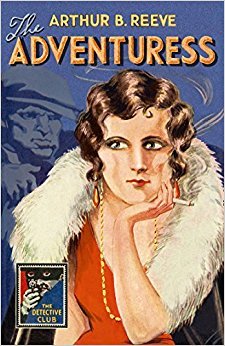 The Adventuress is an odd title for a crime story, perhaps, but I was tempted to read Arthur B. Reeve's novel as a result of its appearance in the Detective Story Club series. One of the key features of this series, like the British Library Crime Classics, is the sheer variety of the material. Other than one or two short stories, I've hardly bothered with Reeve in the past, but found that this novel had some features of merit, even if its interest is mainly historical.
The Adventuress is an odd title for a crime story, perhaps, but I was tempted to read Arthur B. Reeve's novel as a result of its appearance in the Detective Story Club series. One of the key features of this series, like the British Library Crime Classics, is the sheer variety of the material. Other than one or two short stories, I've hardly bothered with Reeve in the past, but found that this novel had some features of merit, even if its interest is mainly historical.This edition also benefits from an excellent introduction by David Brawn, which sets the book in context. Reeve had a meteoric rise to fame as a crime writer, thanks to his creation of the "Scientific Detective" Craig Kennedy. The stories were packed with incident, and narrated by an excitable journalist who is constantly baffled by Kennedy's brilliant work and occasional enigmatic pronouncements.
This story gets off to a cracking start, quite literally, as someone attempts to shoot a lawyer who is about to consult Kennedy. And this highlights the nature of the Kennedy stories. Danger and excitement abound, even if some of the action is thinly motivated - I'm still not convinced that the assassination attempt made much sense.
The mystery concerns the murder of a munitions magnate while on board his fancy yacht. Various family members, and even perhaps a rascally lawyer or two, are suspects. And what about the exotic lady adventuress herself? Or the Japanese servant? Or the mysterious foreigner who keeps lurking in the background? Well, the narrator is always asking questions at the end of chapters, so is it any wonder I've found his habit infectious?
There's a lot of scientific jargon intended to impress the bemused reader, and the style is so dated that it's no great surprise that Reeve's reputation faded almost as quickly as it grew. But he was a lively storyteller, and there aren't many dull moments, that's for sure.
Last, but definitely not least, can I mention that many of the Friday bloggers, splendidly marshalled by Patti Abbott, who write about Forgotten Books are today paying tribute to Bill Crider, one of the finest bloggers of them all. Bill is a novelist with a long and distinguished track record, and has also contributed a regular column to Ellery Queen's Mystery Magazine. I've been glad to have a word with him, albeit all too briefly, at the last couple of Bouchercons, in New Orleans and a few weeks ago in Toronto. Sadly, Bill has been in poor health for some time, but I'm glad to take this opportunity to express my appreciation of him and his work. Do take a look at other Friday bloggers for more about Bill and his books,
Published on December 15, 2017 02:44



